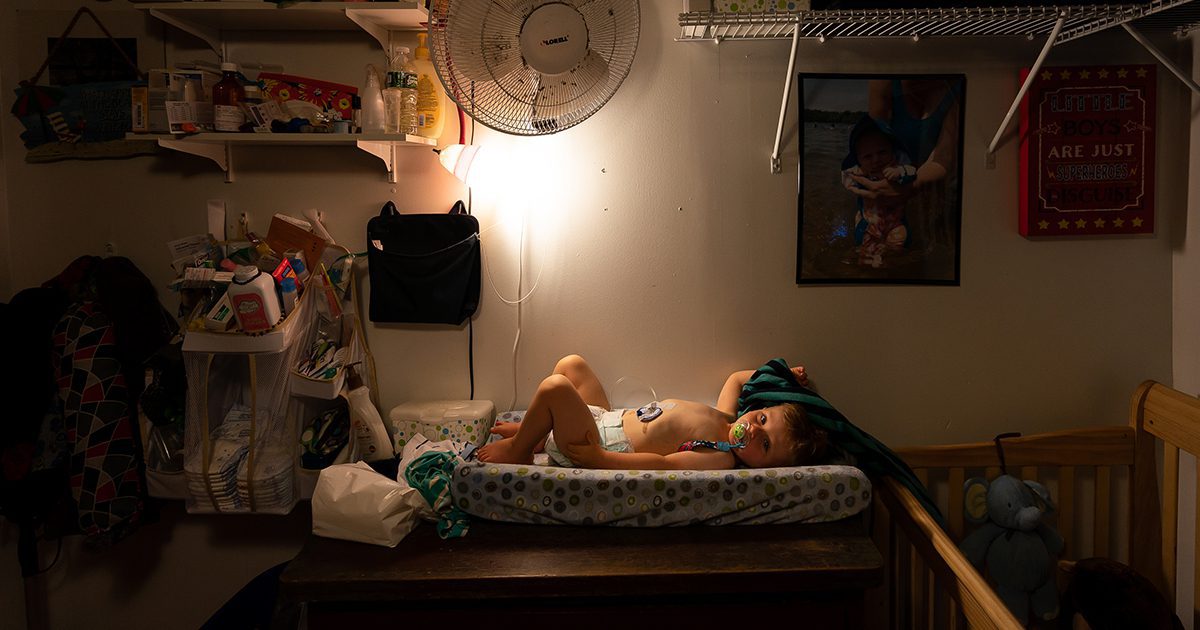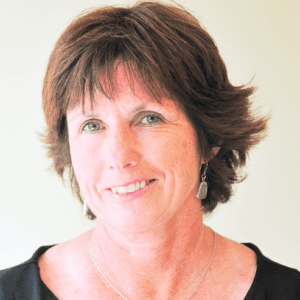The baby girl was born on a Sunday.
By Tuesday, she was suffering from opiate withdrawal. Exposed to drugs in her mother’s womb, she could not sleep. Inconsolable, her high-pitched cries racked her tiny body.
At four days old, a nurse administered the first dose of methadone to ease the infant’s distress. Sedated, the newborn sleeps in a darkened nursery on this drizzly spring day. Electrodes attached to her chest and fingers monitor her heart and respiratory rate.
“She’s had some trouble,” whispers Dr. Gabrielle Harpell, medical director of MaineGeneral’s pediatric hospitalist team.
The infant was one of two babies suffering from opiate withdrawal that week at the Augusta hospital.
Maine has one of the highest rates of opiate-affected babies in the country, according to the U.S. Centers for Disease Control. An average of 975 drug-affected babies were born each year in the state — nearly three a day — between 2013 and 2017.
Reasons for the state’s unusually high numbers
Health experts say several factors have contributed to Maine’s high rates of opiate-dependent babies:
• Maine had one of the highest opiate prescription rates in the nation in 2012, with an average of 60 to 65 pills prescribed annually for every man, woman and child. According to a 2012 CDC study, Maine doctors wrote 21.8 opiate prescriptions per 100 residents – more than double the national average of 10.3 prescriptions per 100.
• Treatment for opiate addiction is difficult to access, especially in rural communities where patients often must travel hours to find a doctor that specializes in caring for pregnant women with opiate-use disorders.
• There are 25,000 to 30,000 Maine people, according to the Substance Abuse and Mental Health Administration, who cannot get help for their drug addictions because they do not have insurance.
• Recognized as a mental health illness, Opiate Use Disorder is one of the most difficult addictions to treat and cure; highly addictive, opiates make permanent and profound changes in the brain. Women who become pregnant while dependent on opiates often are afraid to seek help, fearing the stigma and shame.
“It is such a powerful disorder at the biological level,” says Edward Bilotti, a South Portland psychiatrist specializing in addiction. “The changes in the brain are so intense that even that maternal instinct, the desire to protect your baby, isn’t enough for most women to make them quit.”
Between 2013 and 2017 in Maine, 4,877 babies were born dependent on opiates or other drugs, according to the state Department of Health and Humans Services. Though the statistics do not differentiate between what substance the mother was using, the escalation of drug-affected babies parallels Maine’s rise in opiate addictions, with 201 infants born exposed to drugs in 2006 compared to 952 in 2017.
“When you have 952 drug-affected babies out of 13,000 births, that’s a horrific number,” says Gordon Smith, executive vice president of the Maine Medical Association. “About seven percent of our births are from mothers with a substance-abuse disorder.”
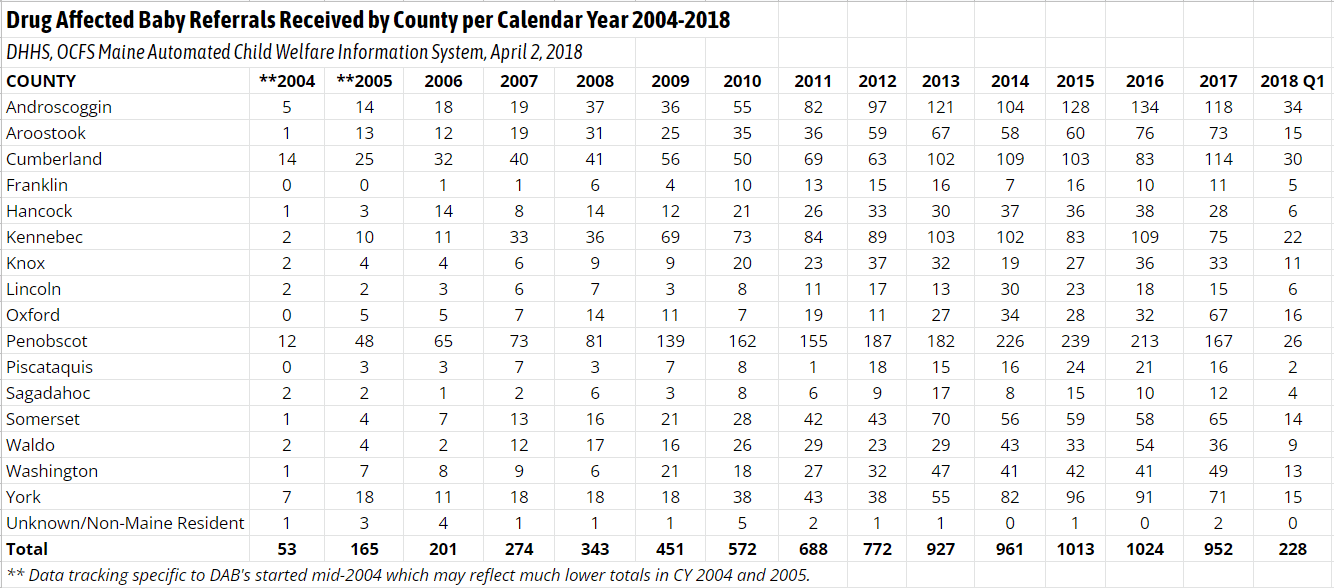
Nationally, pregnant women with Opioid Use Disorder quadrupled over 15 years, from 1.5 per 1,000 delivery hospitalizations in 1999 to 6.5 in 2014, according to a CDC analysis of hospital deliveries in the 28 states that were surveyed.
Maine had the second-highest annual average increase during that time period with 4.3 per 1,000 babies birthed in hospitals, below Vermont with 5.37, while West Virginia was at 2.83, New Mexico 2.47 and Kentucky at 1.33. The other states surveyed were less than 1 percent.
Opiate-exposed infants can suffer from tremors, seizures, severe diarrhea and low birthweight; they often cry inconsolably. They are too frantic to eat or sleep. If their symptoms are severe enough, they are administered methadone doses that are gradually tapered down. The sickest babies may need more medical help once they’re released from the hospital. And without significant research available, it’s unclear how many long-term effects these newborns endure, such as developmental, behavioral and emotional problems.
Heartbreaking to treat
The dramatic spike in Maine’s pregnant women with opiate addictions has overwhelmed hospitals, doctors and nurses who provide medical care for mothers and their drug-dependent babies.
“It’s an epidemic,” says Harpell, from MaineGeneral. “They’re very needy. We do everything we can to get them comfortable.”
Babies suffering from opiate withdrawal are not easy to console. Nurses and doctors know when there is a drug-dependent baby on the maternity ward. Their high-pitched screams pierce the hospital halls. No amount of swaddling or nurturing seems to calm them.
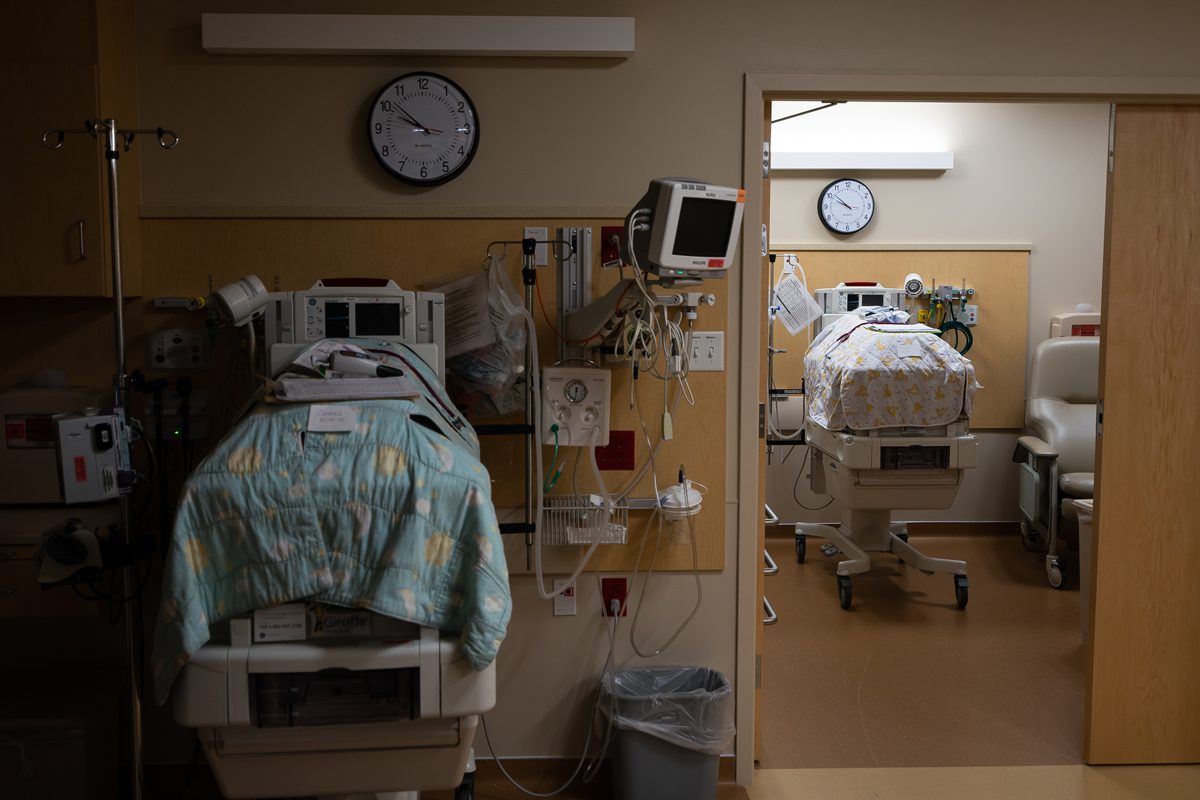
“They often cry so much they get hoarse,” says Melanie Lee, nursing supervisor of MaineGeneral’s maternity and pediatrics ward.
While healthy babies are generally quick to fall asleep, Harpell says an infant suffering from withdrawal may not rest more than a few minutes at a time.
“They wake up restless, irritated,” explains Harpell. “It’s difficult for families and the staff. I have nurses that come out of the nursery fatigued and say, ‘I need a break.’ ”
Babies that require methadone to ease their withdrawal stay longer. The length varies from hospital to hospital. At MaineGeneral, they average a 21-day stay. Babies with complications may end up in the neonatal intensive care unit and require more treatment.
“I’ve had a baby stay as long as 53 days,” Harpell adds.
The baby’s health also depends on which drug the mother takes during pregnancy. If the woman uses illegal opiates such as heroin or fentanyl, the infant faces an increased chance of being born prematurely with problems.
“Moms using intravenous illicit drugs have a higher risk of premature labor and fetal death,” says Nicole Villapiano, a New York pediatrician who has researched opiate-affected newborns nationally. “The babies aren’t fully developed and have an increased risk of respiratory complications as well as seizures.”
To increase an infant’s chance for a healthy birth, many maternal health caregivers now offer medication-assisted treatment or MAT. One of the most common practices in Maine and nationally is to prescribe buprenorphine – an opiate more commonly known as Subutex or Suboxone – which curbs cravings and withdrawal symptoms but does not offer a high. Unlike methadone, which requires patients to receive doses at a clinic, Suboxone or Subutex can be prescribed by doctors and picked up at certain pharmacies.
Infants born to mothers on the opiate-replacement drug buprenorphine may also suffer withdrawal symptoms, Villapiano says, but they’re less severe than for babies born prematurely because of street drugs.
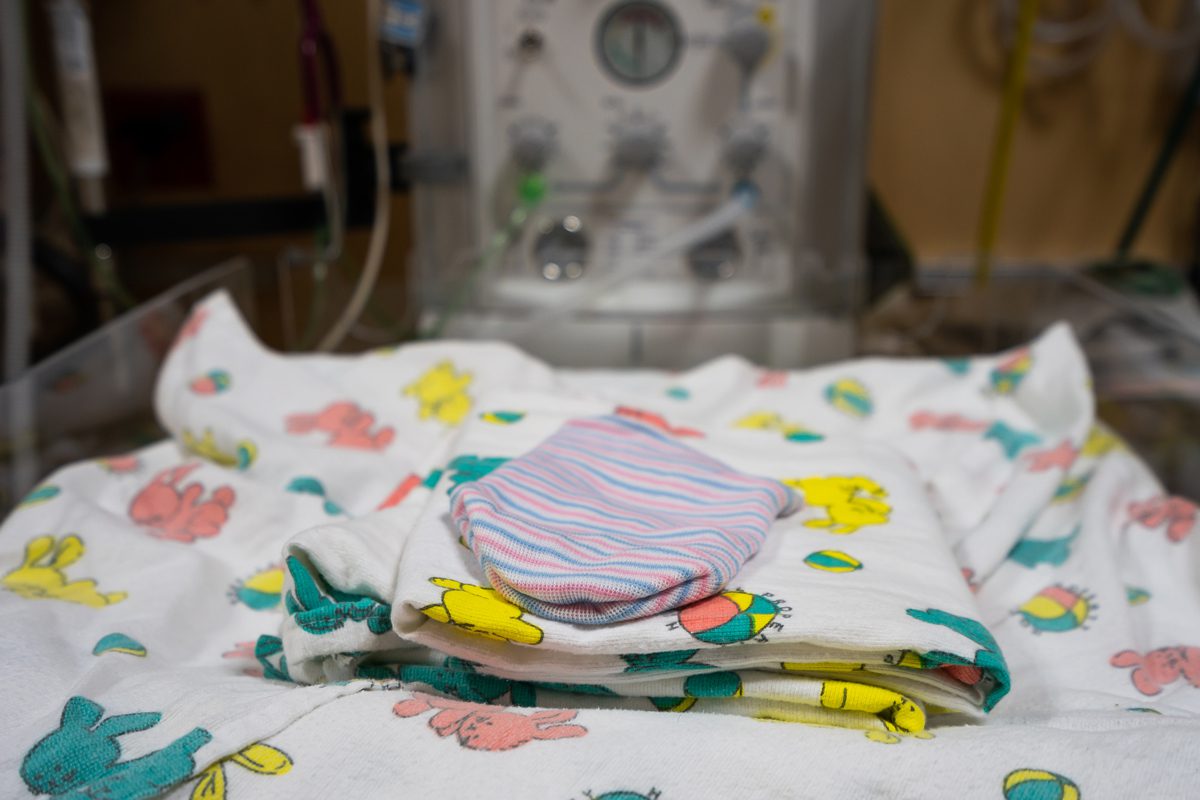
In an effort to reduce the number of infants exposed to opiates, Maine’s Department of Health and Human Services has asked healthcare providers to talk about substance use with their pregnant patients.
“We’re trying to establish a safe space for patients to disclose substance use and get a picture of their environment and support system,” says Kelly Bowden, a perinatal outreach nurse educator at Maine Medical Center.
But there are many barriers to getting women to ask for help – especially stigma and shame.
RELATED: Services aim to help women with opiate addictions prevent pregnancy
“Hands down, pregnant women with substance-use disorder face a gigantic amount of stigma, and that is one of the biggest barriers to accessing resources,” says Andrew Kiezulas, coordinator of the Young People in Recovery’s Northeast Chapter. “When you bring an unborn child into the conversation, that gets people very fired up and very quick to judge and shame.”
Many pregnant women who seek recovery, Kiezulas says, harbor intense remorse and guilt of their own.
“They have an inner monologue of horrible guilt and regret, wondering have I already screwed up my kid with my drug use? Do I even deserve to be a mom? There’s a desperate feeling of ‘I couldn’t stop when I wasn’t pregnant, how do I stop now?’ ”
Despite the strong maternal urge to quit, Opiate Use Disorder, health experts say, is one of the most challenging addictions to treat. It affects nearly all of the brain systems involved in learning, memory, motivation and pleasure.
“The changes are profound and long-lasting, and often irreversible,” explains Dr. Mark Publicker, a Portland psychiatrist and longtime addiction specialist. “While drug use often begins recreationally, once the brain has been altered by drugs such as oxycodone or heroin, opiate addiction is not a voluntary disorder. Opiates change the brain’s center that provides pleasure for doing such basic and essential behaviors.”
Publicker, who treated pregnant moms at Mercy Recovery Center and now does so at his Portland office, says the majority of women desperately want to stop taking opiates when they learn they are carrying a child. But often there is no treatment available, he explains, especially in rural areas.
Harder to get proper care in Maine’s rural areas
Penobscot County, where women may have to travel hours to find a doctor who prescribes buprenorphine, has the state’s highest rate of opiate-affected babies. Between 2014 and 2016 in that county, 666 drug-affected babies were born — nearly double the amount of any other county in Maine.
Penobscot’s high number of drug-exposed infants is no surprise to Dr. Villapiano, who has extensively researched the effect of opiates on rural communities.
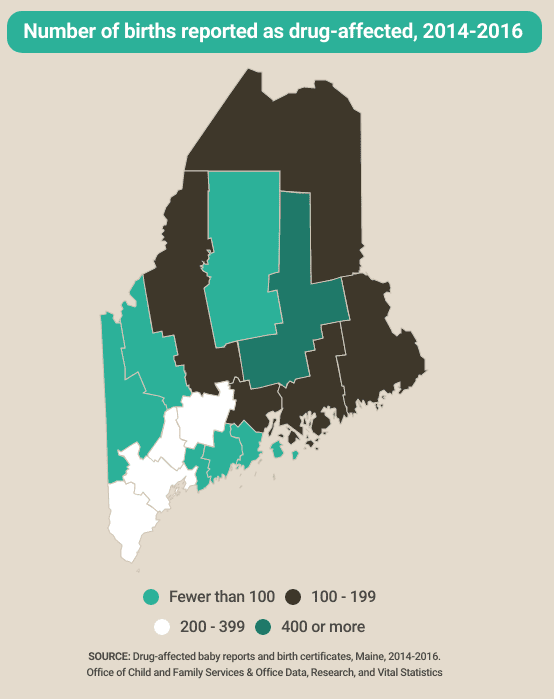
In her 2017 study published in JAMA Pediatrics, she found that between 2003 and 2012, opiate-exposed babies in rural areas increased sevenfold from 1.2 per 1,000 births to 7.5. In contrast, the rate in U.S. cities jumped fourfold from 1.4 cases for every 1,000 births to 4.8.
“Along with a lack of economic stability, there is often a dearth of prevention and treatment services in rural areas,” Villapiano says. “As a result, reproductive-age women in that demographic tend to be hit harder by the opiate epidemic.”
Many smaller hospitals in Maine are not equipped to deliver babies whose mothers are on illicit drugs or who have been treated with buprenorphine because of the potential complications and longer stays.
There also is no central referral agency that can direct women to available services.
Many women try to quit ‘cold turkey,’ not realizing they could harm their fetus, which also will suffer withdrawal symptoms in the womb.
“If they try to detox on their own, they get so sick they feel like they are going to die,” says Alane O’Connor, a nurse practitioner with the Maine Dartmouth Family Medicine Residency. “It’s about getting them stabilized on medication. But counseling is also a big piece in terms of their recovery.”
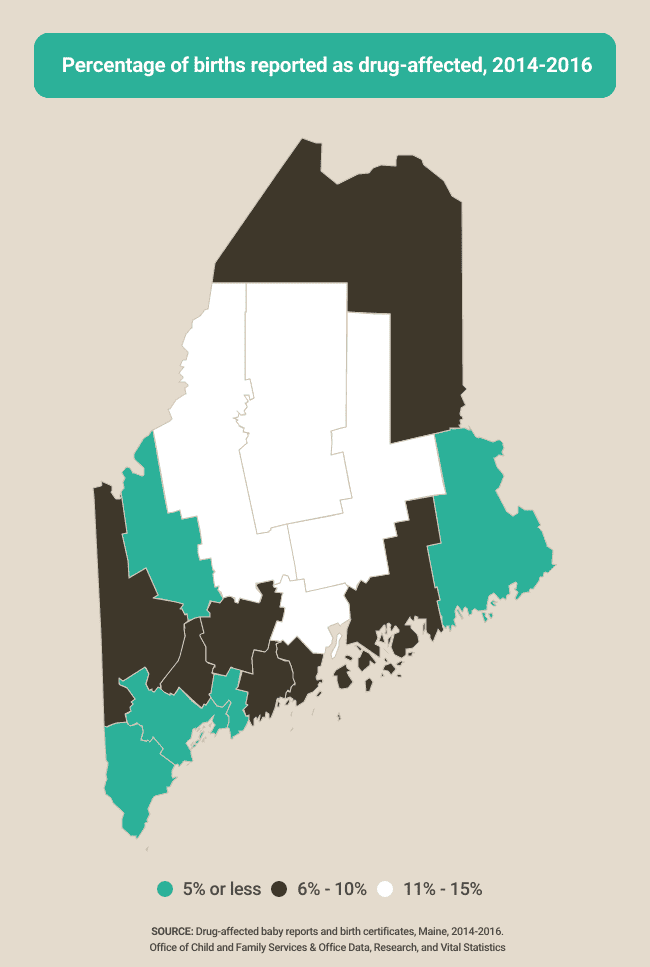
Affiliated with MaineGeneral, with offices in Augusta and Waterville, the program has treated hundreds of women with opiate addictions since it first began offering medically assisted treatment in 2007.
The majority of patients, O’Connor says, have unresolved trauma extending from their childhood throughout their adult lives. Several suffer from anxiety, depression and other mental illnesses.
“I have very few women who abuse drugs who have not had a significant adverse event,” says O’Connor. “Most have very traumatic experiences, domestic violence, sexual, physical abuse, neglect, homelessness.”
One pregnant woman’s struggle to overcome her addiction
Miranda Gilman was 25 when she learned she was pregnant. For the previous seven years, she had been using heroin, Percocet, and OxyContin. She started taking drugs, she explained, to numb the trauma of a sexual assault and to ease the severe mood swings of her bipolar disorder. Before she became pregnant, she tried rehab programs and going to detox clinics.
“But it didn’t stick,” the Sanford mother recalls. “I kept having slips. I overdosed, and I was struggling pretty bad.”
She tried to quit the opioids but became sick and wound up in the hospital.
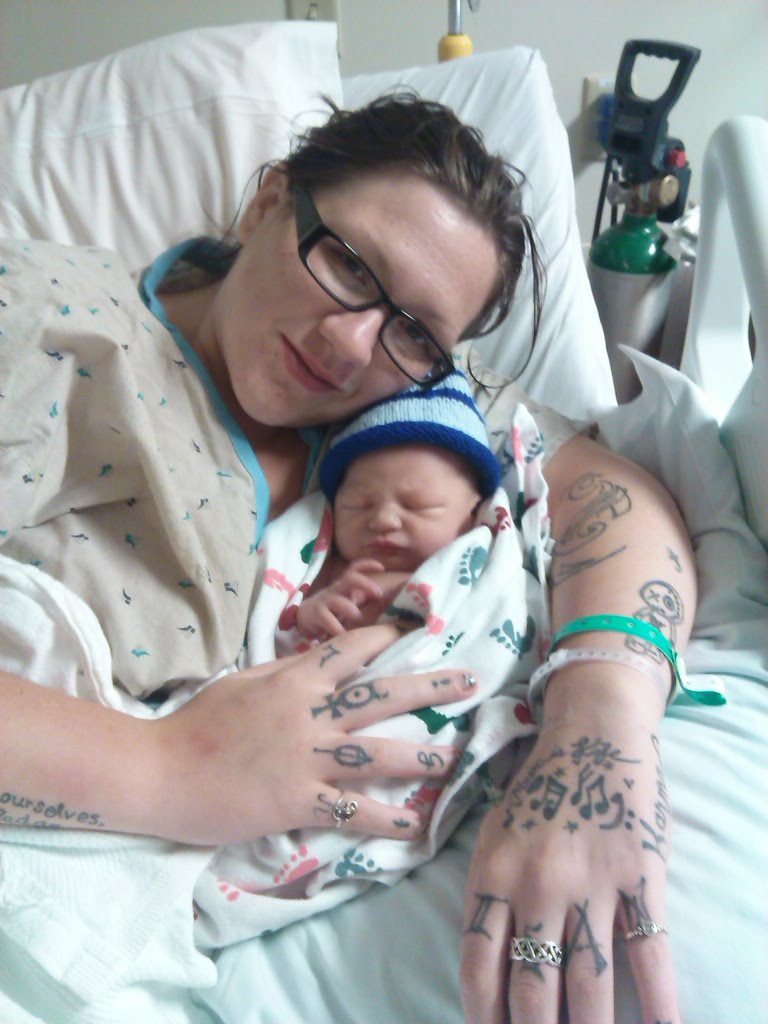
“I got nervous and scared,” she says. “I asked for help. I knew I couldn’t do this on my own.”
Gilman was referred to an intensive outpatient program, where she received counseling to cope with her sexual-assault trauma. She took part in group therapy and was placed on buprenorphine to ease her opiate cravings and withdrawal symptoms.
“For the first time in my life, I took the program seriously because it wasn’t just my own life that it was affecting anymore,” Gilman says. “I say a lot of times that my son saved me from myself.”
Though she had encouragement from her baby’s father, it was the women in her support group who helped her with her concerns and remorse.
“I had a lot of fear throughout my pregnancy; I had been using up till the time I learned I was pregnant, and I was about five weeks. That really scared me.”
Gilman was also worried about how the buprenorphine would affect her baby. In August 2014, she gave birth to a boy she named Keagan.
“For the first two days he had some tremors, but the doctors said that could be from the (buprenorphine),” she says. “He didn’t go through withdrawals as bad as some babies do. I am extremely grateful for that.”
Now 29, Gilman and her partner also have a daughter Willow, who is nearly 2. As co-chapter leader of Sanford Young People in Recovery, Gilman often shares her story with other women, offering them hope that they can get into recovery and birth healthy children.
“People talk about Maine’s overdoses, but they don’t talk about pregnant moms,” Gilman says. “There are a lot of us out there. If we can shed more light on this, it opens up more doors for other women. And it gives their babies a better chance.”
According to the Maine DHHS, about 70 percent of pregnant women like Gilman do get into treatment, but for those who continue to use illegal opiates, the outcome for their babies can be dire. The worst scenario is when a mother has had little or no medical care and arrives at the hospital to give birth while still using illegal street drugs, says nurse practitioner O’Connor.
To determine what drugs the mother has been taking, doctors test the newborn’s stool and urine.
“The baby’s first stool will tell us what substances it was exposed to during the last 20 weeks of pregnancy,” O’Connor explains. “The urine shows more recent activity in the last few days.”
Maine’s law mandates that healthcare providers report to DHHS any baby showing withdrawal symptoms at birth, regardless of whether the newborn’s mother was taking buprenorphine or illicit drugs. If the agency believes the newborn is at risk, the infant is placed in protective custody and in a foster home.
State’s foster-care system also feeling the strain
Along with challenging the state’s hospitals, the surge in Maine’s opiate affected babies has overwhelmed the state’s foster-care system. The number of infants and children placed in foster care rose 45 percent – from 1,268 in 2012 to 1,842 in 2016.
“Close to 75 percent of the families are affected by substance abuse and in particular, opioids,” says Bette Hoxie of Adoptive Foster Families for Maine. “It’s a big strain on the system. There are not enough homes to go around, and it’s been a growing problem.”
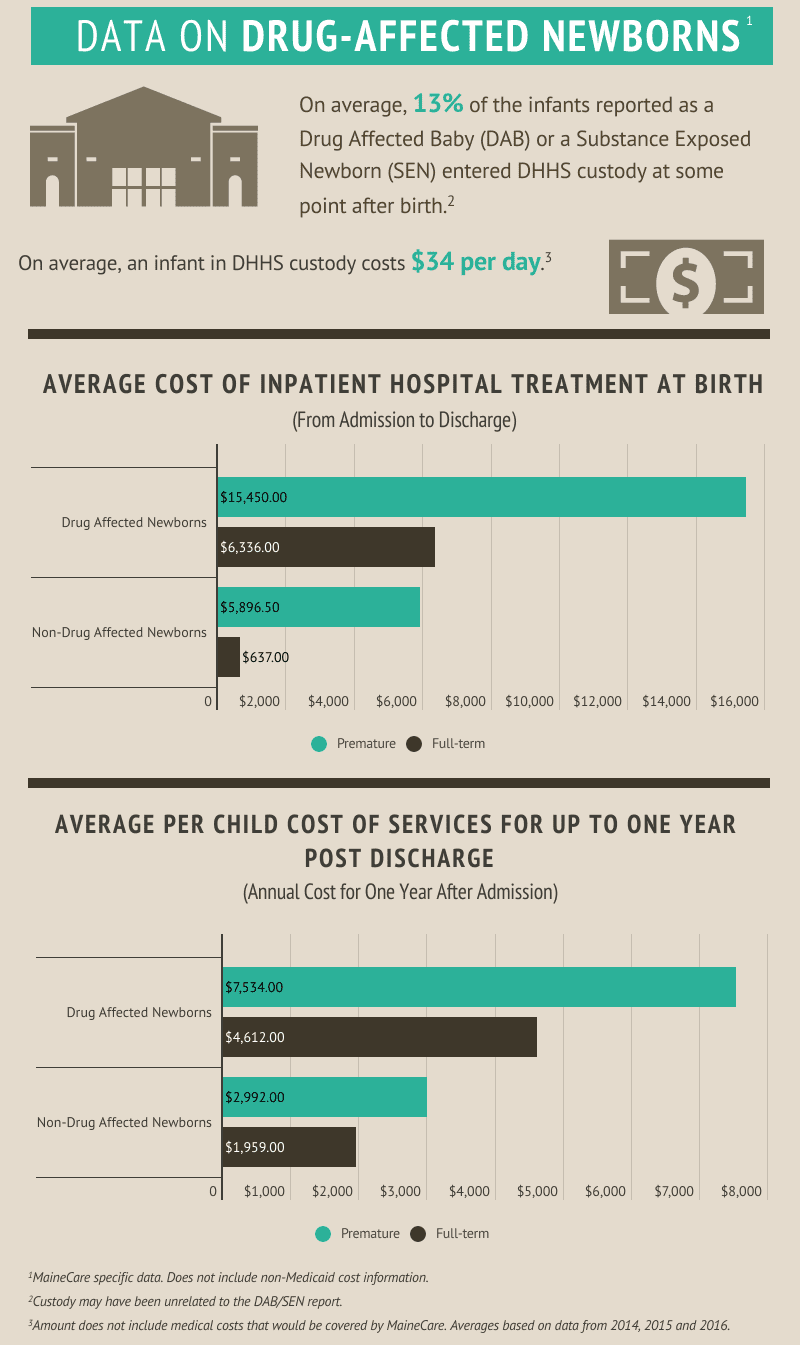
Scot Story’s adopted daughter spent the first month of her life at Maine Medical Center in Portland. Born prematurely, she suffered several complications from her mother’s heroin and cocaine use during pregnancy. Along with excessive crying and tremors, she was born with gastroschisis, a birth defect in which the baby’s intestines extend outside of the body through a hole in the abdominal wall. Story, a Central Maine foster parent, agreed to take the baby home once she recovered from surgery.
“I remember vividly having a conversation with the surgeon that helped repair my daughter’s intestines and expressing regret for not being there for the first month of her life, and he said, ‘You probably should be glad you don’t have that mental image of her.’ She was so small, so pitiful; she was struggling to survive.”
Because protocol was different in 2012 when she was born, doctors sent the family home with phenobarbital, which induces sleep and helps prevent tremors. Every day for four months, they gave the newborn doses of the drug to ease her anguish. As the phenobarbital dose wore off, the baby began to shake.
“It was heartbreaking,” Story says. “It’s tough for adults withdrawing from drugs, so just think of what it does to a baby.”
Now 6, Story’s daughter is a permanent member of his family. He and his wife also adopted three other children and founded Project Sparrow, a non-profit that advocates and offers support for at-risk children in the foster-care system. As more and more opiate-affected babies are born in the state, Story continues to share his experience with other foster families who might be hesitant to care for babies with withdrawal symptoms.
Still, Story wonders about his daughter’s long-term effects of being exposed to drugs in the womb. She has been diagnosed with Attention Deficit Disorder, needs occupational and speech therapy, and sees a counselor for behavioral issues.
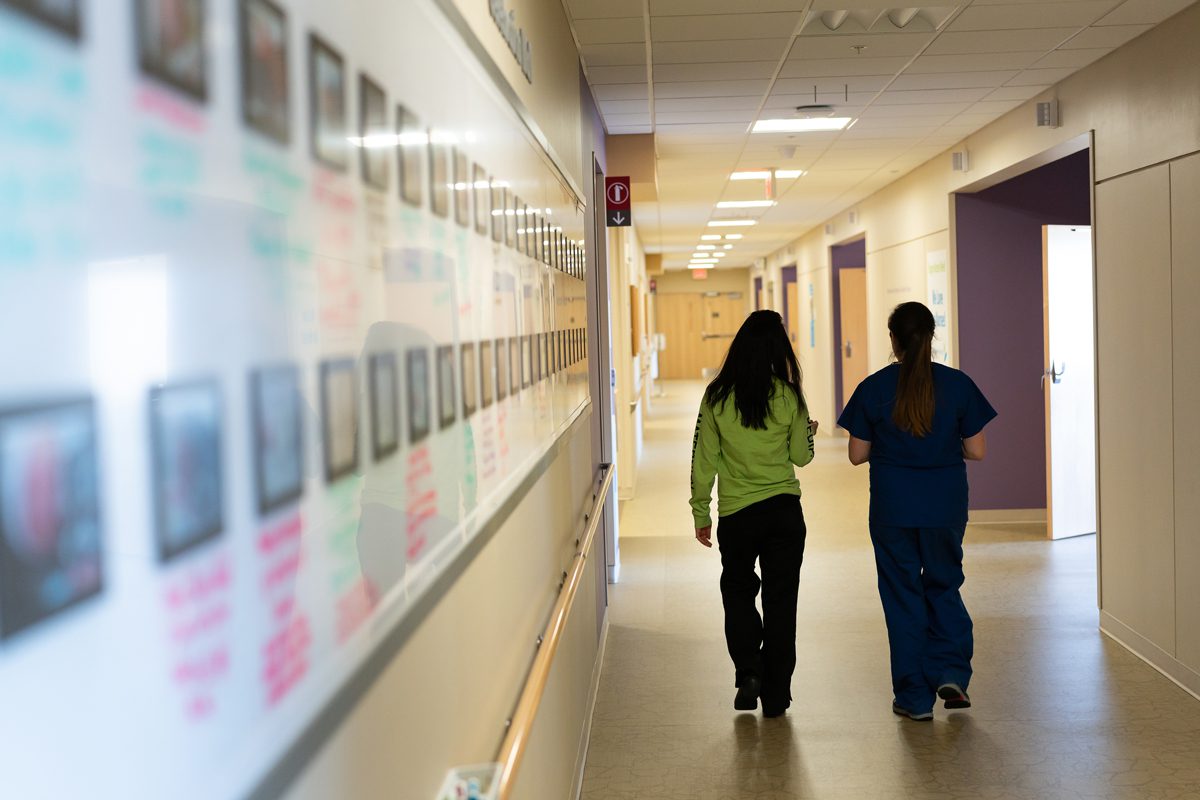
“But regardless of whether a kid has an issue,” he says, “they need to be taken care of and loved.”
Opiate-exposed babies tend to have behavioral and attention problems during their early school years, explains Villapiano, but it’s unclear how much the baby’s genetics and home environment play a role in those traits.
“The jury is still out when it comes to how these babies are affected long-term,” she says. “We believe it’s likely that after the baby goes through the withdrawal period that it should − in an ideal set of conditions – be able to develop and grow just like any other baby.”
Costs add up across the board
Along with the personal suffering to the nearly 1,000 babies born drug dependent in Maine each year comes added cost. The sickest ones may need additional treatment once they’re released. According to the National Institute on Drug Abuse, hospital costs for babies with opiate withdrawals were $66,700 on average compared to $3,500 for babies born healthy.
That hospital cost, healthcare workers say, could be reduced dramatically if more women of childbearing age were able to access Medicaid, which would allow them to seek treatment before they became pregnant. According to DHHS statistics, two-thirds of drug-affected babies were born to mothers with a high school education or less. The mothers are less likely to be married and have private insurance.
Without treatment, the cycle of giving birth to drug-affected babies is likely to continue. According to DHHS, 69 percent of the 250 women who gave birth to a drug-affected baby between 2014 and 2016 also gave birth to another infant who suffered withdrawal symptoms during the same time period.
“It’s a huge public-health issue,” says Harpell. “A lot of times there is generational substance abuse and untreated mental-health illnesses. If we can treat and help the mothers, then the babies have a better chance of not continuing the cycle.”
But many women who seek treatment do not have insurance.
In Maine, according to the Substance Abuse and Mental Health Administration, 25,000 to 30,000 people cannot get help because of a lack of insurance or the inability to find a health provider. The DHHS says it’s unknown how many are women, but doctors believe the state’s high number of opiate-affected babies could be reduced if women of childbearing age could get treatment before they become pregnant.
“Women in medically assisted treatment aren’t engaging in risk behaviors,” Publicker says. “They’re not using injectable drugs and they’re not putting themselves and their fetus at risk of an overdose.”
Maine’s Medicaid expansion, approved by voters in late 2017, would provide insurance for 70,000 low-income people, but Gov. Paul LePage has refused to implement the law until legislators create a plan to cover the state’s share of funding.
“Medicaid expansion is the single most impactful thing that we could do to provide coverage to thousands of people with substance-use disorder,” says Smith of the Maine Medical Association.
Maine has taken some positive steps to address the opiate epidemic, Smith says. Legislators passed a law in 2016 to restrict and monitor opiate prescriptions, and the state created more services for women with opiate addiction. But it is far too little too late, he asserts.
“We’ve gone from being one of the top opiate prescribers nationally in 2012 to somewhere in the middle,” Smith says. “But it didn’t cost us anything to pass a law. When it comes to putting resources into treatment and harm reduction, we lag way behind other states.”
New Hampshire, Smith notes, was awarded nearly $23 million in grant money from the Substance Abuse and Mental Health Services Administration in September, while Maine will receive about half of that sum or $11 million.
“Maine needs to be more aggressive in getting federal funds and using them,” Smith says. “And it should be a special priority to get women of childbearing age help. The harm is being done and the suffering continues for the mother and the baby.”
Gov.- elect Janet Mills agrees that addressing the opiate epidemic and reducing Maine’s high number of drug-exposed babies needs to be a priority in January when she takes office. Along with implementing Medicaid and seeking more federal money for treatment and prevention, Mills says she plans to appoint an “opiate epidemic point person to bird-dog the situation and report to me every day about what we’re going to do to address it.”
Mills also says her administration will work toward reducing the stigma and shame that shrouds pregnant women with Opiate Use Disorder.
“I want to encourage women who become pregnant to seek help and not to think the government is against them,” Mills says. “My administration is there to help them get through the pregnancy … and to deliver the healthiest baby possible.”
Though the number of drug affected babies born in 2018 is estimated to have dropped slightly from 957 in 2017 to around 900 this year, doctors say they’re still seeing far too many pregnant women with opiate addictions.
“It’s great that it went down a little bit,” says Augusta nurse practitioner Alane O’Connor. “But it’s way too soon to say that we’ve turned the tide.”
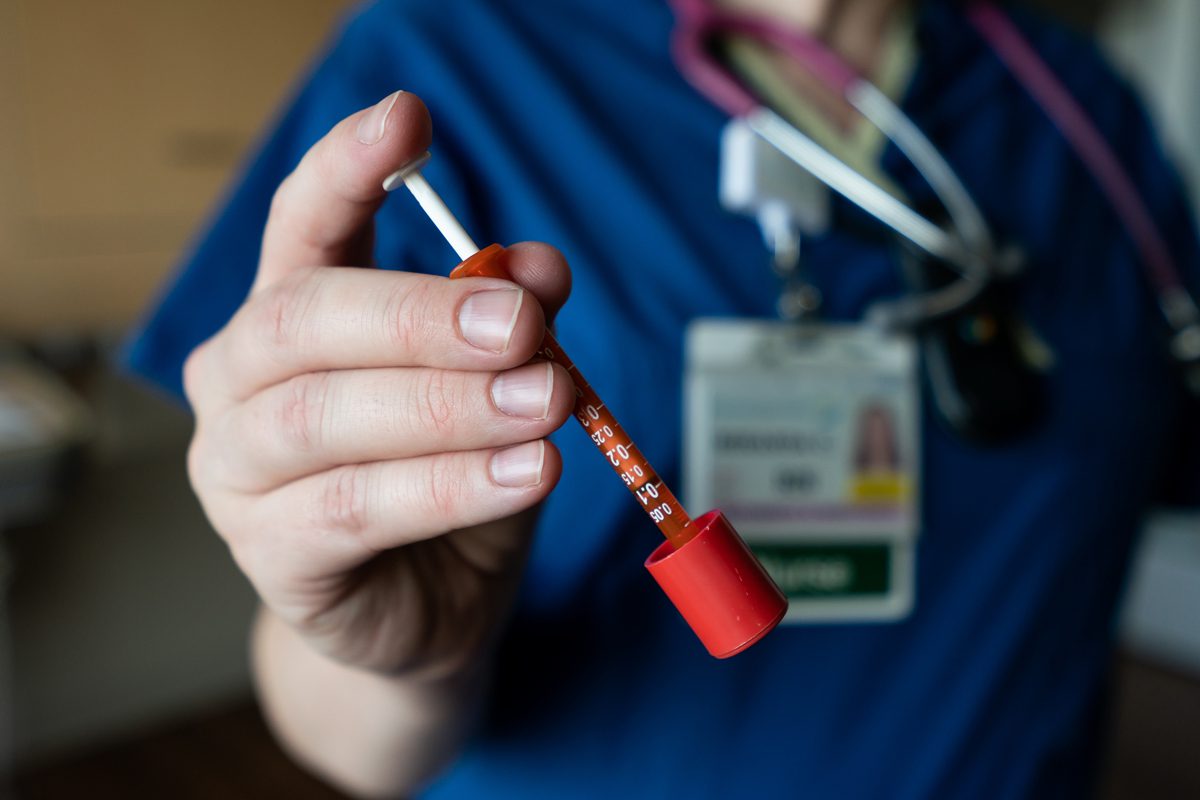
On a cold fall morning, a nurse at MaineGeneral Hospital prepares to ease the suffering of another opiate-dependent baby. She holds a syringe with a carefully measured dose of methadone. In a nearby room, a newborn awaits the drug that will ease its withdrawal symptoms. The liquid will be slipped into the infant’s mouth to relieve its discomfort and piercing cries.
For the next several days, and maybe weeks, as these methadone doses are tapered, the baby will stay at the hospital to be monitored. When the infant is able to eat, sleep, and be consoled without medication, the baby will be cleared to go home.
“It’s a hard way to start a life,” says nursing supervisor Melanie Lee. “Your heart goes out to these babies and their families. It’s tough for everyone involved.”


